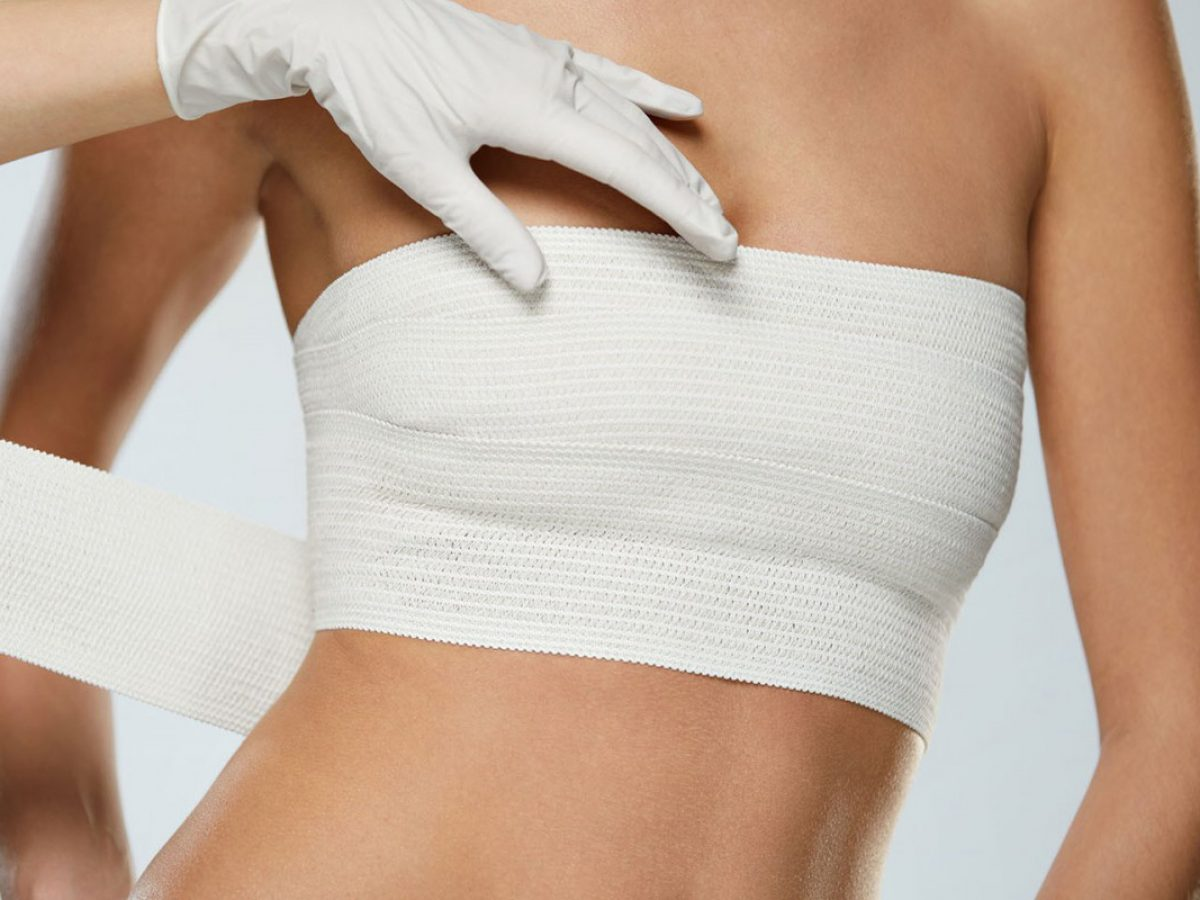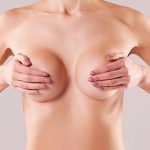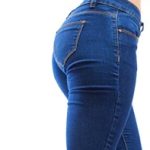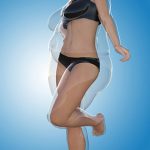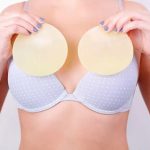What is a flat or inverted nipple?
Flat nipples lay even with your surrounding breast tissue. Inverted nipples point inward toward your breast instead of sticking out. Inverted and flat nipples are usually just harmless variations of healthy breast anatomy.
Though flat and inverted nipples are typically harmless, sudden changes in the color or shape of your nipples could indicate an underlying health condition. If your nipples invert or change suddenly, let a healthcare provider know.
Your nipples might be:
- Protruding. Your nipples stick out from your surrounding breast tissue.
- Flat. Your nipples lay flat and even with your surrounding breast tissue.
- Inverted. Your nipples pull inward, tucked inside your surrounding breast tissue.
Symptoms and Causes
What causes flat or inverted nipples?
There can be many reasons why someone has flat or inverted nipples. Possible causes include:
- Fetal development.
Your nipples developed while you were still a fetus. They may appear flat or inverted because your nipple base is small or because your milk ducts didn’t fully form during fetal development.
- Breast injuries.
Scarring from breast surgery or even breastfeeding (chest feeding) can change your nipple’s tissue.
- Infections.
Bacteria can invade your nipple and cause an abscess or mammary duct ectasia (when your milk ducts get clogged). These conditions can result in flat or inverted nipples.
- Age-related breast changes.
Your breasts change as you age. Leading up to menopause, your milk ducts may shorten, causing your nipples to invert or lay flat.
- Pregnancy.
Your nipples may flatten as your breasts become filled with milk during pregnancy.
- Breast engorgement.
Engorgement can cause your nipples to appear flat or inverted. This usually resolves once the swelling goes down.
- Benign breast disease.
Flat or inverted nipples are a common symptom in people with benign breast disease. This condition causes noncancerous breast lumps.
- Paget’s disease of the breast.
This rare type of breast cancer develops in the skin of your nipple. Sometimes mistaken for eczema, Paget’s disease of the breast can cause symptoms like skin rash, inflammation, or a flat or inverted nipple.
- Breast cancer.
When a breast tumor invades a milk duct, it can cause your nipples to flatten or invert.
Flat or inverted nipple cancer symptoms
Flat or inverted nipples usually don’t indicate cancer. But if your nipple’s appearance changes suddenly, talk to a healthcare provider. It could be a sign of underlying disease.
People with breast cancer may notice that their nipple suddenly becomes flat or inverted. Additional breast cancer symptoms may include:
- A lump in your breast or armpit.
- Any change in your breast’s shape or size (especially if you notice changes in just one breast or nipple).
- Dimpling of breast skin (resembling an orange peel).
- Flaky or itchy skin (pruritus) in your nipple area.
- Nipple discharge.
- Breast pain.
WHY INVERTED NIPPLE SURGERY IN IRAN?
Iran has always been a quite popular place for tourists seeking medical care, especially in the region. Recent years has seen the emergence and surge of the field of cosmetic tourism and Iran is considered one of the most reliable options to get plastic surgery, be it minor or major, done.
Having access to an abundance of successful and globally-renowned doctors and surgeons is only one of the perks of having surgical procedures in this land. What makes Iran unique among a host of countries with modern medical facilities is the undeniable fact that almost all cosmetic/medical procedures including invasive and non-invasive surgeries are far more cost-effective compared to having the same treatment in many other countries.
Further to this, patients who head to Iran for their treatment get the chance to visit one of the oldest civilizations of the world with numerous historical, cultural, and architectural attractions.
For an inverted nipple surgery in Iran, not only people would save up to 70% of the cost they would have to pay in their own countries. But also they are guaranteed to get the most efficient surgery without being put on a long waiting list.
 COST OF NIPPLE CORRECTION SURGERY IN IRAN
COST OF NIPPLE CORRECTION SURGERY IN IRAN
Inverted nipple correction surgery costs differently depending on the surgeon, hospital facility, and the anesthetist. This cosmetic surgery is not usually covered by insurance.
An inverted nipple surgery in Iran starts at $500 and goes up to $1,000 (including all the related fees). This treatment, however, costs £1,500 to £4,360 in the United Kingdom, $2,000 to $4,000 in the United States, $1,500 in Turkey, and $1,200 in India.
So, though the quality of surgeries including the proficiency of the surgeon, hospital facility, and checkups are high, correcting your nipples in Iran is much more affordable than in other countries, even in India, one of the most famous medical tourism hubs in the world.
Diagnosis and Tests
How do healthcare providers diagnose flat or inverted nipples?
A healthcare provider can tell you if your flat or inverted nipples are a cause for concern. They’ll do a physical examination to see if they feel any lumps or bumps. They may also recommend tests to rule out other conditions. These tests may include:
- Mammogram.
- Breast ultrasound.
- MRI (magnetic resonance imaging).
- Needle biopsy (to test for cancer cells).
Management and Treatment
How do healthcare providers treat flat or inverted nipples?
Flat or inverted nipples don’t always need treatment. But if a condition causes flat or inverted nipples — or you just want to enhance the appearance of your nipples — your provider will help you choose a treatment based on your specific needs.
Antibiotics
If an infection causes flat or inverted nipples, a provider can prescribe antibiotics. They can also drain or surgically remove any abscesses.
Flat or inverted nipple breastfeeding treatments
Flat or inverted nipples might make it difficult for your baby to latch during breastfeeding. While it can be challenging at first, you can still breastfeed with flat or inverted nipples. There are things you can try to coax your nipples outward, making it easier for your baby to attach. These include:
- Hoffman technique. Place your thumbs on either side of your nipple. Then, press down while pulling your thumbs apart to encourage your nipple to pop up so that your baby can latch.
- Manual stimulation. Nipples are erectile tissue. Gently place your thumb and forefinger around your nipple and make a rolling motion or apply cold to it to encourage it outward. Side-lying while feeding your baby can make this even more successful. (In this position, you and your baby lie down facing each other. Your baby’s mouth should be level with your nipple.)
- Suction device. Your baby is often the best tool to draw your nipple out. But you can also use a suction device like inverted nipple correctors or a breast pump to draw out your nipple. Please note, your baby should latch onto your areola and not your nipple. So, getting a deeper latch can often solve these issues.
If these methods fail, consider talking with a lactation consultant. They may recommend nipple shields. Nipple shields are thin silicone covers that can help your baby latch. Be sure to discuss the pros and cons of nipple shields with your healthcare provider.
 Cancer treatments for flat or inverted nipples
Cancer treatments for flat or inverted nipples
When breast cancer causes flat or inverted nipples, you’ll meet with an oncologist to discuss your treatment options, which might include:
- Surgery.
- Chemotherapy.
- Radiation therapy.
- Hormone therapy.
Cosmetic surgery for flat or inverted nipples
Nipples come in all varieties, including flat and inverted. But if you feel self-conscious about your nipples, your provider can recommend plastic surgery procedures to make them more protruded.
How can I reduce my risk of flat or inverted nipples?
Most of the time, people are born with flat or inverted nipples. In these cases, there’s nothing you can do to prevent them.
But you can reduce your risk of infection by not smoking. Most people who have periductal mastitis (a chronic infection of breast tissue) use tobacco products. The condition causes many symptoms, including nipple inversion.
Am I A Suitable Candidate For Nipple Correction Surgery ?
Determining if you are a suitable candidate for nipple correction surgery depends on several factors. Generally, an ideal candidate for this procedure:
- Has inverted or flat nipples causing physical discomfort, self-consciousness, or difficulty breastfeeding.
- Is in good overall health, without any conditions that could interfere with the healing process or increase surgical risks.
- Has realistic expectations about the potential outcomes and limitations of the procedure, understanding that breastfeeding ability and nipple sensation may be affected in some cases.
- Is not currently pregnant or breastfeeding, as these factors can impact the surgery’s safety and effectiveness.
- Is a non-smoker or willing to quit smoking before and after the procedure, as smoking can hinder healing and increase the risk of complications.
It is important to consult with a qualified plastic surgeon at Centre for Surgery to evaluate your specific situation and discuss your goals, expectations, and any potential risks. They will assess your medical history, current health status, and the degree of nipple inversion to determine if nipple correction surgery is the right option for you.
Inverted nipple correction procedure
Inverted nipple correction surgery is a cosmetic procedure designed to address the issue of inverted or flat nipples and enable them to protrude properly. The primary objective of this surgery is to release the nipple from the constricted milk ducts, allowing it to project outward.
A key concern in inverted nipple surgery is the preservation of breastfeeding capabilities following the procedure. If you plan to have children in the future, it is important to discuss this with your surgeon. Whenever possible, the surgeon will perform a lactiferous duct-sparing procedure – a technique that aims to preserve the milk ducts and maintain breastfeeding potential.
This preservation is typically achievable in Grade 1 nipple inversion cases, but is less likely in Grades 2 and 3. In moderate and severe nipple inversion cases, it may not be possible to evert the nipple without severing the constricted milk ducts.
Inverted nipple correction surgery can be categorized based on whether the milk ducts are cut, and thus, whether breastfeeding abilities are preserved or not:
- Milk Duct Sparing Surgery: In this approach, the surgeon attempts to preserve the milk ducts during the procedure. This technique is more suitable for mild cases of nipple inversion (Grade 1) and aims to maintain the patient’s ability to breastfeed in the future.
- Milk Duct Damaging Surgery: This type of surgery involves cutting the milk ducts to release the nipple and correct the inversion. While this approach may be necessary for more severe cases (Grades 2 and 3), it can result in the loss of breastfeeding capabilities post-surgery.
Lactiferous Duct-Sparing Inverted Nipple Correction Surgery for Mild Cases
This specific inverted nipple correction procedure is intended for women experiencing mild cases of flat nipples who wish to retain their breastfeeding capabilities.
In the lactiferous duct-sparing approach, the milk ducts are not severed. Instead, they are carefully stretched to allow the nipples to project outward.
The surgical process begins with a small incision made at the lower edge of the areola, which is the pigmented skin surrounding the nipple. The surgeon then proceeds to release any fibrous tissues that are causing tension on the nipple and gently stretches the milk ducts.
By maintaining the milk ducts’ attachment to the nipple, the patient’s ability to breastfeed should remain unaffected. The stretching of the ducts enables the nipples to become more prominent and protruding.
To secure the nipple in its new, outward position, the surgeon employs one or more surgical techniques, commonly utilizing a dermal flap method and vertical suturing. This involves making an incision around the nipple’s skin and tightening it with sutures to prevent the nipple from retracting inward again.
Following the procedure, the areola skin is meticulously closed using fine suture lines to ensure optimal healing and minimal scarring.
Lactiferous Duct-Sparing Inverted Nipple Correction Surgery for Mild Cases
This specific inverted nipple correction procedure is intended for women experiencing mild cases of flat nipples who wish to retain their breastfeeding capabilities.
In the lactiferous duct-sparing approach, the milk ducts are not severed. Instead, they are carefully stretched to allow the nipples to project outward.
The surgical process begins with a small incision made at the lower edge of the areola, which is the pigmented skin surrounding the nipple. The surgeon then proceeds to release any fibrous tissues that are causing tension on the nipple and gently stretches the milk ducts.
By maintaining the milk ducts’ attachment to the nipple, the patient’s ability to breastfeed should remain unaffected. The stretching of the ducts enables the nipples to become more prominent and protruding.
To secure the nipple in its new, outward position, the surgeon employs one or more surgical techniques, commonly utilizing a dermal flap method and vertical suturing. This involves making an incision around the nipple’s skin and tightening it with sutures to prevent the nipple from retracting inward again.
Following the procedure, the areola skin is meticulously closed using fine suture lines to ensure optimal healing and minimal scarring.
Milk Duct-Damaging Inverted Nipple Correction Surgery
This method of inverted nipple correction is typically employed for more severe cases, such as Grade 2 and 3 nipple inversion.
As this non-protruding nipple correction procedure involves severing the nipple from the constricted milk ducts, breastfeeding will not be possible following the surgery.
The procedure begins with a small incision made at the base of the areola. The surgeon proceeds to cut both the milk ducts and the fibrous tissue that is causing the nipple to retract. Once the nipple is released, it is repositioned into a more prominent, outward-facing position using specialised suturing techniques, such as vertical and horizontal suturing.
Upon completion of the procedure, the skin surrounding the areola is carefully closed with fine suture lines to minimise scarring.
Both types of inverted nipple correction surgeries generally take approximately one hour to perform and can be done under local anaesthesia. However, general anaesthesia may be an option if preferred by the patient.
Recovery Process Following Inverted Nipple Correction Surgery
When recovering from inverted nipple correction surgery, you may experience some or all of the following symptoms:
- Pain around the nipples
- Mild bleeding or spotting
- Swelling around the nipples
- Bruising at the base of the nipples and breast
- Numbness and tingling sensations in the nipples
These side effects are typically normal and not a cause for concern. However, if you develop a fever, significant swelling, increasing pain, or notice pus, contact your clinic as soon as possible.
Inverted Nipple Correction Surgery Aftercare:
- Keep the surgical dressing in place for 4-6 days, changing it daily.
- If non-resorbable sutures were used, return to your clinic within 5-7 days to have them removed.
- If resorbable sutures were used, they should dissolve on their own within a few weeks.
- Apply ice packs to help reduce swelling and alleviate pain.
- Take pain medication as needed – there’s no need to endure unnecessary discomfort.
- Sleep on your back for the initial 1-2 weeks following the surgery to avoid breast trauma.
- Consult your surgical team about scar-reducing treatments to use on your incision sites.
Risks and complications of inverted nipple correction
Inverted nipple correction has been successfully performed for many years at Centre for Surgery with an excellent safety profile. Women and men should only choose a reputable provider with years of experience in inverted nipple surgery. With a fully certified plastic surgeon at Centre for Surgery, you can be confident in having made the very best choice for nipple correction surgery coupled with an outstanding package of aftercare to reduce the risk of complications.
Potential risks of inverted nipple correction
As with any surgical procedure, inverted nipple correction has potential risks. These include:
- Haematoma formation
- Surgical site infection
- Delayed wound healing
- Nipples distortion
- Potential requirement for revision surgery







